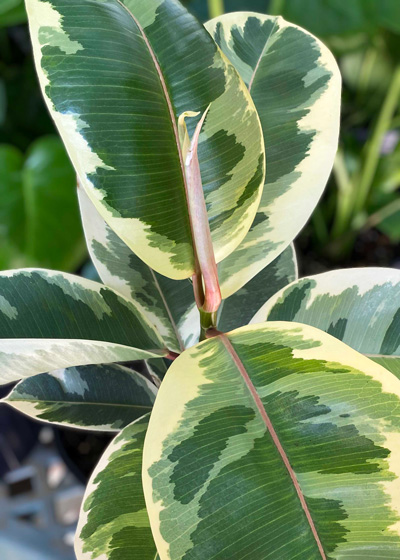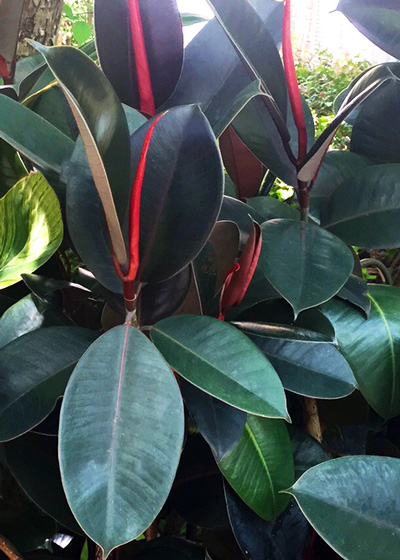Variegated Rubber Plant
Most of us know rubber plants as houseplants. But there’s a lot more to their story, and part of it includes this showy variegated form. Let me outline the details.
What you need to know…
Scientific name: Ficus elastica
Common name: Rubber plant, because its latex sap is used as a source of flexible rubber.

Varieties available: There are several, including F. elastica ‘Decora’ with its large, dark reddish-green leaves and this variegated form known as F. elastica ‘Variegata.’
Native home: Southeast Asia.
Hardiness Zones: Zones 10-12 (sub-tropical and tropical). Outdoors in Texas only in the southern tip of the state and along the immediate southern Texas Gulf Coast.
Mature height and spread where it can grow outdoors without freezing: to 100 ft. tall and wide. As a houseplant it can be pruned and maintained at 6 to 7 ft. for several years.
Lighting: Bright light, but no direct afternoon sun, particularly for the variegated type. Variegated selections of most plants tend to scorch in Texas summer sun. If the plant starts to drop its lower leaves, that’s a sign of inadequate light, especially if the new growth is coming out with leaves that roll under without ever unfurling flat.

Soil needs: Soil must drain perfectly, so plant in highly organic, lightweight potting soil. Rubber plants do not thrive in heavy clays that tend to stay waterlogged.
Water requirements: As long as soil drains well, plants can be kept moist at all times. Allow to go an extra day or two without watering during the dark days of winter just to avoid over-watering.
Fertilizer needs: Apply a water-soluble, high-nitrogen food monthly, perhaps slightly more often when you are watering more often during the spring and summer and gradually less often during the winter.
Propagation: By air-layering. Here are details from my website.
